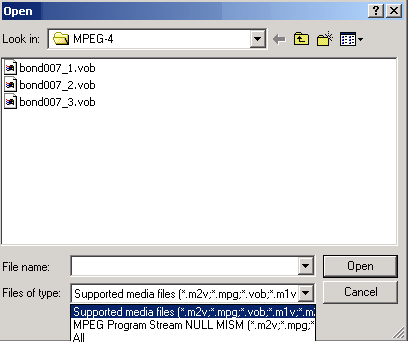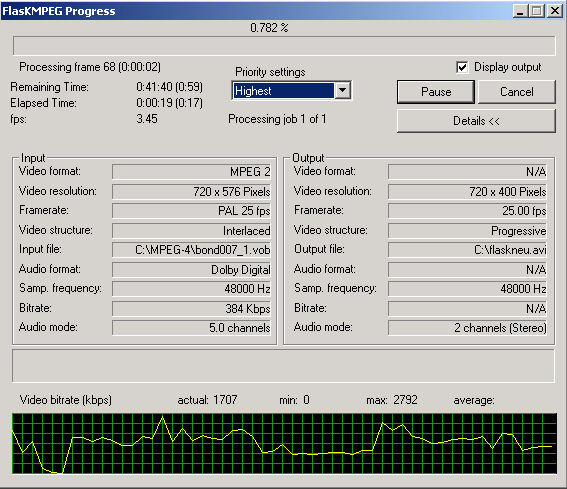MPEG-4: FlasK MPEG/Divx's Improved Coding
Weaknesses - 4 GB Limit And No NFO Acceptance
The new version of FlasK MPEG still has some deficiencies - in Windows 98 SE, the maximum file size is limited to 4 GB. Files grow very quickly to this size if several VOB files are combined on the hard drive when ripping a DVD-ROM. Another of the new version's problems is its inability to process NFO files. This function was still available in the old FlasK MPEG version.
The new FlasK MPEG version processes more file formats, but can no longer read NFO files (scripts).
FlasK MPEG in action: Depending on CPU power, video sequences can be converted to MPEG-4 format at a specified frame rate.
Conclusion: FlasK MPEG - More Functions And Easier To Handle
The cult program FlasK MPEG is on its way to becoming a professional tool. More and more users are using FlasK MPEG either to save space by storing movies on the hard drive in MPEG-4 format or to burn private videos from a DV camera to a CD-ROM (in MPEG-4 format). The new version supports command structures for modern processors like AMD Athlon or Pentium 4.
Compared to earlier versions, the program's MPEG-4 encodes very rapidly. FlasK MPEG is also substantially more stable - in Windows 98 SE, the program crashes less often and in Windows 2000, it is almost totally stable. Individual settings for audio and video codecs still have to be set manually each time, whereas encoding could be faster and more painless if there was a save option for these settings. The most current versions of FlasK MPEG and the Divx codec can be found at the following links - FlasK MPEG and Divx .
Get Tom's Hardware's best news and in-depth reviews, straight to your inbox.
Current page: Weaknesses - 4 GB Limit And No NFO Acceptance
Prev Page Improved MPEG-4 Codec: Divx 3.22
